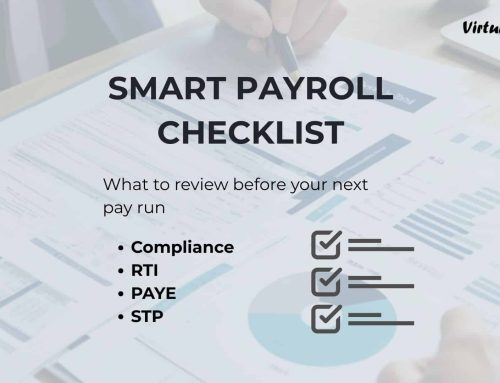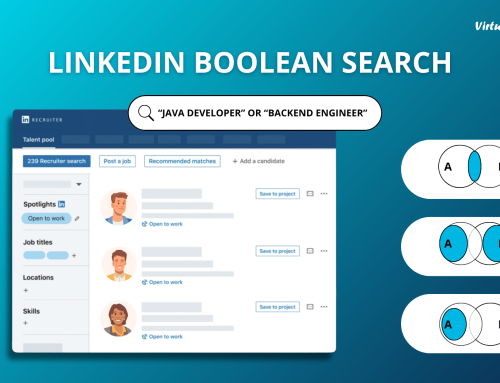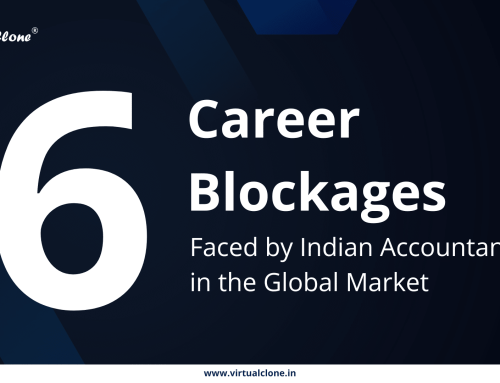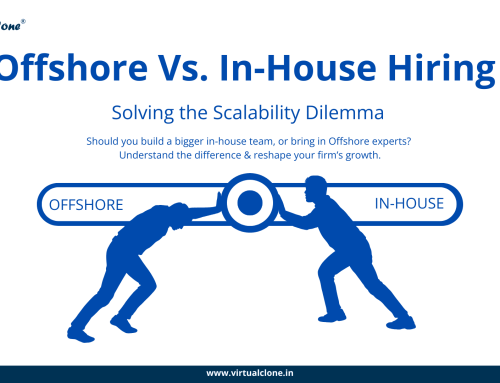What AI-Powered Hiring Actually Means (Beyond the Buzzwords)
The term “AI-Powered Hiring” often creates confusion about what it entails. Let’s cut through the hype and examine what modern AI-powered hiring systems actually do and, more importantly, what they don’t do.
What is AI-Powered Hiring?
AI-Powered Hiring is the strategic application of machine learning, natural language processing, and predictive analytics to enhance human decision-making throughout the recruitment process. It’s not about replacing recruiters; it’s about augmenting their capabilities with data-driven insights and automation.
- A black box that makes hiring decisions without human oversight
- A system that eliminates the need for human judgment
- A one-size-fits-all solution that works the same for every company
- A replacement for proper job analysis and role definition
The Four Pillars of AI-Powered Hiring
1. Intelligent Resume Screening & Candidate Matching
Traditional resume screening is a nightmare of inefficiency. HR professionals spend an average of 60 seconds reviewing each resume, making snap judgments based on formatting, keywords, and gut instinct. This approach misses qualified candidates and introduces unconscious bias.
How AI Transforms This Process:
- Semantic analysis understands context, not just keywords (recognizing that “led a team” and “managed personnel” indicate similar leadership experience)
- Skills extraction identifies both hard and soft skills from narrative descriptions
- Experience mapping converts varied job titles and responsibilities into standardized competency profiles
- Bias detection flags potentially discriminatory screening criteria and suggests alternatives
Real-World Example: Shopify implemented an AI screening system that analyzes resumes based on 47 different factors, including career progression patterns, skill diversity, and project complexity. The result? They reduced initial screening time by 89% while improving candidate quality scores by 34%.
Advanced Matching Capabilities:
- Predictive scoring ranks candidates based on the likelihood of success in the specific role
- Cultural fit analysis matches personality traits and work styles to team dynamics
- Growth potential assessment identifies candidates who may exceed role requirements
- Retention prediction flags candidates likely to stay with the company long-term
2. Automated Candidate Engagement & Communication
The candidate experience often makes or breaks your employer brand. Poor communication, delayed responses, and impersonal interactions drive top talent away before you even get to assess their capabilities.
AI-Powered Communication Systems Include:
Intelligent Chatbots:
- Available 24/7 to answer candidate questions
- Conduct preliminary screening interviews with natural language processing
- Schedule interviews automatically based on candidate and interviewer availability
- Provide real-time updates on application status
Personalized Outreach:
- Craft individualized messages based on candidate background and interests
- A/B test subject lines and content to optimize response rates
- Segment candidates by experience level, role type, and communication preferences
- Track engagement metrics to refine messaging strategies
Multi-Channel Orchestration:
- Coordinate touchpoints across email, SMS, phone, and social media
- Ensure consistent messaging across all platforms
- Optimize timing based on candidate behavior patterns
- Maintain conversation context across different channels
Example Implementation: Unilever’s AI chatbot “Una” engages with over 300,000 candidates annually, conducting initial interviews, answering questions, and guiding candidates through their application process. Candidates report 94% satisfaction with the experience, and Unilever has seen a 50% increase in application completion rates.
3. Advanced Assessment & Skill Evaluation
Traditional interviews are notoriously unreliable predictors of job performance. Studies show that unstructured interviews have a predictive validity of just 38%, while structured interviews with AI enhancement can achieve 65% accuracy.
AI Assessment Technologies:
Video Interview Analysis:
- Facial expression recognition to assess confidence and communication skills
- Speech pattern analysis to evaluate clarity, pace, and engagement
- Language processing to understand response quality and relevance
- Behavioral cue detection to identify leadership potential and teamwork abilities
Skills-Based Testing:
- Adaptive assessments that adjust difficulty based on candidate responses
- Real-world simulation environments for technical and soft skill evaluation
- Collaborative problem-solving scenarios to assess teamwork and communication
- Time-based challenges to evaluate performance under pressure
Cognitive Ability Testing:
- Pattern recognition assessments for logical reasoning
- Memory and processing speed evaluations for role-specific requirements
- Creative thinking exercises for innovation-focused positions
- Emotional intelligence testing for customer-facing and leadership roles
Case Study – Technical Assessment: GitHub uses AI to evaluate coding submissions, analyzing not just correctness but also code quality and efficiency. Their system can assess 500+ coding challenges simultaneously, providing detailed feedback within minutes. This has reduced their technical screening time from 5 days to 2 hours while improving the correlation between assessment scores and on-the-job performance.
4. Predictive Analytics & Decision Support
The most powerful aspect of AI-Powered Hiring is its ability to learn from historical data and predict future outcomes. This transforms hiring from a gut-feeling exercise into a data-driven science.
Predictive Models Include:
Success Prediction:
- Analyze patterns from your top performers to identify similar candidates
- Weight different qualifications based on their correlation with success in your specific environment
- Account for team composition and role requirements in scoring algorithms
- Provide confidence intervals for hiring recommendations
Retention Forecasting:
- Identify red flags that correlate with early turnover
- Predict which candidates are likely to stay beyond critical milestone periods (90 days, 1 year, 3 years)
- Factor in compensation expectations, career goals, and cultural preferences
- Recommend retention strategies for high-risk but high-potential candidates
Performance Trajectory Modeling:
- Estimate how quickly new hires will reach full productivity
- Predict long-term career progression and promotion potential
- Identify candidates who may outgrow their initial role quickly
- Model team dynamics and collaboration effectiveness
Salary and Negotiation Intelligence:
- Benchmark compensation against market rates and internal equity
- Predict candidate salary expectations based on background and location
- Optimize offer packages to maximize acceptance probability
- Identify negotiation points most likely to close deals
Common Implementation Pitfalls and How to Avoid Them
Pitfall 1: Over-Automation Without Human Oversight
The Problem: Companies sometimes implement AI as a complete replacement for human judgment, leading to poor candidate experiences and hiring mistakes.
The Solution:
- Maintain human touchpoints at critical stages (final interviews, offer discussions)
- Use AI for augmentation, not replacement of human decision-making
- Implement regular human review of AI recommendations
- Establish clear escalation procedures for edge cases
Best Practice Example: Salesforce uses AI to screen and rank candidates, but requires human approval for all final hiring decisions. AI provides recommendations with confidence scores, allowing recruiters to focus their attention where it’s most needed.
Pitfall 2: Insufficient Change Management
The Problem: Introducing AI without proper change management leads to resistance, poor adoption, and suboptimal results.
The Solution:
- Executive sponsorship: Visible leadership support and communication
- Stakeholder involvement: Include hiring managers, recruiters, and candidates in the design process
- Gradual rollout: Start with pilot programs before full implementation
- Continuous communication: Regular updates on progress and benefits
- Training and support: Comprehensive education and ongoing assistance
Change Management Framework:
- Awareness: Why change is necessary
- Desire: Personal motivation to support change
- Knowledge: How to change (skills and behaviors)
- Ability: Tools and resources to implement change
- Reinforcement: Sustaining change over time
Pitfall 3: Poor Integration with Existing Systems
The Problem: AI hiring tools that don’t integrate well with existing HR systems create data silos and workflow disruptions.
The Solution:
- System compatibility assessment: Evaluate integration requirements before purchase
- API availability: Ensure robust data exchange capabilities
- Data synchronization: Real-time updates across all systems
- Backup procedures: Manual workarounds for system downtime
Integration & Success Factors:
- Choose vendors with proven integration track records
- Involve IT teams early in the selection process
- Plan for data migration and validation
- Test thoroughly before full deployment
- Maintain relationships with vendor technical support
With competition heating up and rising candidate expectations, companies must embrace AI tools that offer both agility and accuracy. AI-powered hiring solutions offer a scalable, precise, and cost-effective way to fill roles while freeing up your team to focus on high-value strategic work.
If your hiring process still takes 30 days, you’re already behind.
It’s time to recruit smarter, scale faster, and stay ahead.
Ready to Transform Your Hiring?
At Virtual Clone, we combine AI-powered hiring technology with deep recruitment expertise to help businesses hire top talent in record time. Whether you are filling one role or building an entire team, we can tailor a solution that matches your growth.
👉 Book your free 20-minute consultation today and see the future of hiring in action.






